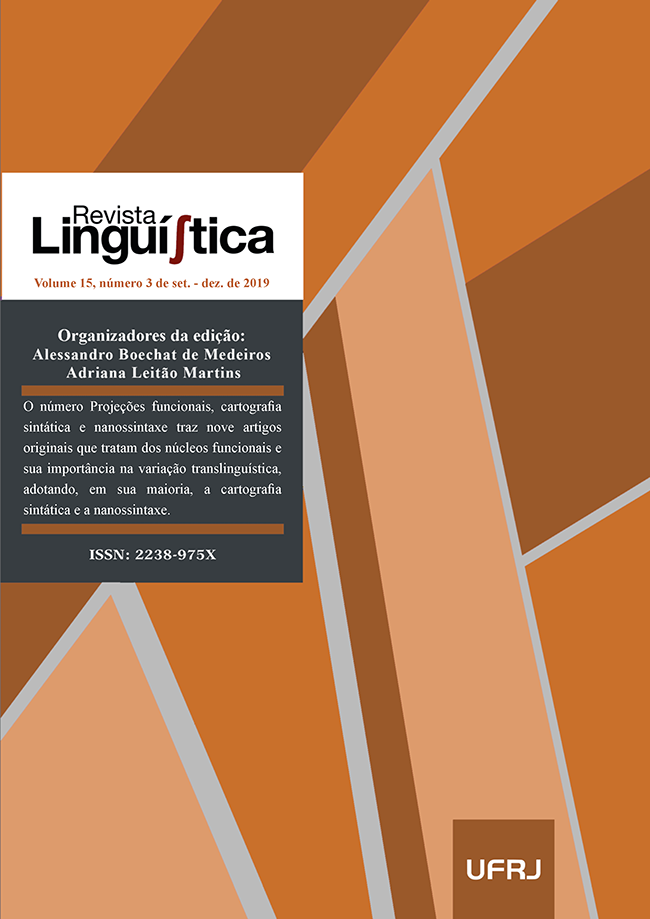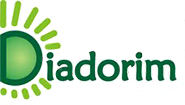Paraguayan Spanish nanosyntax: ‘leism’, null object and differential object marking
DOI:
https://doi.org/10.31513/linguistica.2019.v15n3a27616Keywords:
Paraguayan Spanish, nanosyntax, differential object marking, leism, null object.Abstract
In this paper we intend to present a preliminary analysis, in the light of Nanosyntax, of three phenomena found in Paraguayan Spanish (EP), namely the differential object marking (DOM), leísmo and the null object. We seek to understand how the meanings associated with these phenomena are related, as well as the way they are morphosyntactically performed. Thus, our goal with this work is twofold: to contribute to the description of Paraguayan Spanish within a formal framework of linguistic analysis, and to consider both syntactic and semantic motivations for the proposal of nanosyntactic structures that DOM be licensing the variation observed in this language. Our analyses point to a parallelism between DOM and leísmo with +animated nouns, on the one hand, and between DOM and null object with inanimate complements, on the other, suggesting that the structure that underlies null object and DOM contexts, as well as dative 'a' must share some functional feature. So, this article begins with a brief presentation of Paraguayan Spanish and the context of the triple border (Argentina-Brazil-Paraguay) in which this research is inserted. After that, we will briefly review the literature that has already discussed the three phenomena and discuss oral and written Paraguayan Spanish data collected from various public access media. Finally, we will propose a nanosyntactic analysis of the phenomena considering this new data, and will make some final considerations about the possible outspread of this research.
---
DOI: http://dx.doi.org/10.31513/linguistica.2019.v15n3a27616
Downloads
Published
Issue
Section
License
Authors who publish in the Revista Linguí∫tica agree with the following terms:
The authors maintain their rights, ceding to the journal the right to first publication of the article, simultaneously submitted to a Creative Commons license permitting the sharing with third-parties of published content as long as it mentions the author and its first publication in the Revista Linguí∫tica.
Authors may enter into additional agreements for the non-exclusive distribution of their published work (for example, posting in online institutional or non-profit repositories, or book chapters) so long as they acknowledge its initial publication in the Revista Linguí∫tica.

The journal Revista Linguí∫tica is published by the Post-Graduate program in Linguistics of UFRJ and employs a Creative Commons - Attribution-NonCommercial 4.0 International (CC-BY-NC).









